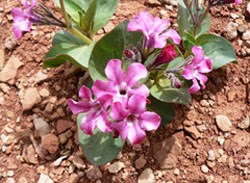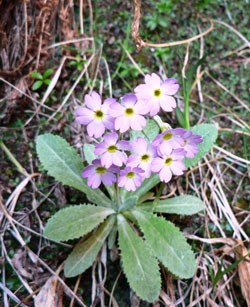
NPS/John Spence The Colorado Plateau is rich in endemic plant species, which are species that are restricted to a particular region. Of the more than 3,000 vascular plants that have been documented in the region, about 10% are endemic, or found only in the Colorado Plateau. The Plateau supports the largest concentration of endemic plants of any region in the U.S. This high level of endemism can be attributed to the geological and environmental complexity and highly variable and stressful environments of the area, particularly limited water in a warm desert habitat. Stress is an important stimulus for the evolution of specialized and narrowly distributed species. Some endemic species may have recently evolved (neoendemics), while others are relict species from previous environments (paleoendemics), which may have been significantly different in climate. Geographic isolation from other populations of the same species also contributes to genetic diversity, which can cause the evolution of an entirely new species. 
NPS / Taryn Preston About 40 Colorado Plateau endemic plants are found in Glen Canyon National Recreation Area (NRA), 20 of which are considered to be rare in Utah and Arizona. Some plants will grow only on certain geologic formations. For example, Jones cycladenia (Cycladenia humilis var. jonesii) is only found in Southeastern Utah and Northern Arizona on Chinle, Cutler, and Summerville Formations. It was federally listed as a threatened species in 1986 and is monitored by the National Park Service. Jones cycladenia was probably present during the Pleistocene ice age and it has been suggested that its original pollinator is no longer around, which may limit its reproduction. The most pressing threats to Jones cycladenia are climate change, which affects the fragile and small habitat it exists on, the potential for mineral and gas exploration, off-road vehicles in some areas, and consumption by herbivores. Other local species include Atwood’s evening primrose (Camissonia atwoodii), Higgin’s desert parsley (Cymopterus higginsii) and tropical goldeneye (Heliomeris soliceps), the latter two found only on the Tropic Shale Formation north of Lake Powell along the Warm Creek road and around Big Water, Utah. 
NPS/John Spence As the environment of the Colorado Plateau continues to change, vegetation communities and their associated species will continue to change or possibly become extinct. Plants that are able to evolve and respond to the environmental stress will survive, and species that were once widely distributed may become endemic to the area. By protecting and preserving the Colorado Plateau, including Glen Canyon NRA, the species unique to the region may continue to survive and evolve, providing opportunities to increase our knowledge of distribution and biology. Species in danger of extinction can be protected under the Endangered Species Act of 1973, so long as their habitats are protected. Without such protection, these irreplaceable and unique genetic resources could be lost. Published 8/07 |
Last updated: April 26, 2023
